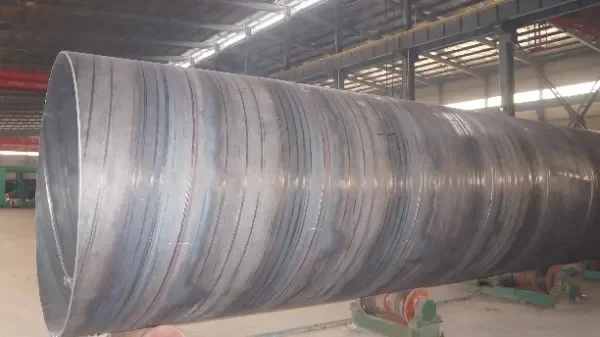How is the spiral steel pipe pile produced?
Spiral steel pipe pile is a new type of basic building material, which has the characteristics of strong bearing capacity, convenient construction, and long service life, and is widely used in construction, bridges, docks, tunnels, and other fields. So, how is the spiral steel pipe pile produced? Let's introduce it in detail.

1. Raw material preparation
The main raw material of spiral steel pipe piles is steel plates, generally low-alloy high-strength steel plates such as Q235B and Q345B. Before production, the steel plate needs to be pretreated, including removing impurities such as rust and oil on the surface to ensure the quality of the steel plate.
2. Coil forming
Coil forming is the first step in the production of spiral steel pipe piles, and it is also the most critical step. There are three main types of coil forming equipment: spiral forming machine, roll forming machine, and bending forming machine. Among them, the screw former is the most commonly used one.
The spiral forming machine is a kind of equipment that rolls the steel plate into a spiral shape. Its working principle is: the steel plate is fed into the forming machine from one end, and after a series of rollers and molds, the steel plate is gradually rolled into a spiral shape and finally forms a spiral shape. root spiral steel pipe. The design of the rollers and molds of the forming machine is very critical, and their shape and size determine parameters such as the diameter, wall thickness, and helix angle of the spiral steel pipe.
3. Welding
During the production process of the spiral steel pipe pile, the two ends of the spiral steel pipe need to be welded to form a complete steel pipe pile. There are two main welding methods: submerged arc welding and double-sided welding.
Submerged arc welding is a method of welding wire buried inside the steel pipe. It has the advantages of good welding quality and firm weld seams, but the disadvantage is that it requires special equipment and technology, and the cost is high. Double-sided welding is a method of welding the welding wire from both sides of the steel pipe. It has the advantages of low cost and simple operation, but the disadvantage is that the welding quality is not as good as submerged arc welding.
4. Rust removal and anti-corrosion
Spiral steel pipe piles are easily affected by oxidation and corrosion during use, so trusting and anti-corrosion treatments are required. The rust removal methods mainly include mechanical rust removal, chemical rust removal, sandblasting rust removal, etc. The anti-corrosion methods mainly include spraying, hot-dip galvanizing, and plastic coating.
5. Quality inspection
After the production of spiral steel pipe piles is completed, quality inspection is required to ensure that their quality meets the standards. The quality inspection items mainly include visual inspection, dimensional inspection, chemical composition analysis, mechanical performance test, etc.
6. Packaging and transportation
After the spiral steel pipe pile is produced, it needs to be packaged and transported. Generally, wooden pallets, plastic sheets, and other materials are used for packaging to prevent steel pipe piles from being damaged during transportation. The modes of transportation mainly include road transportation, railway transportation, and waterway transportation.
To sum up, the production process of spiral steel pipe piles includes raw material preparation, coil forming, welding, rust removal and corrosion protection, quality inspection, packaging, and transportation. In the production process, it is necessary to strictly control the quality of each link to ensure that the quality of spiral steel pipe piles meets the standards, so as to provide reliable foundation support for projects in the fields of buildings, bridges, docks, and tunnels.
The difference between spiral steel pipe pile and ordinary spiral steel pipe
How is spiral welded steel pipe produced?






